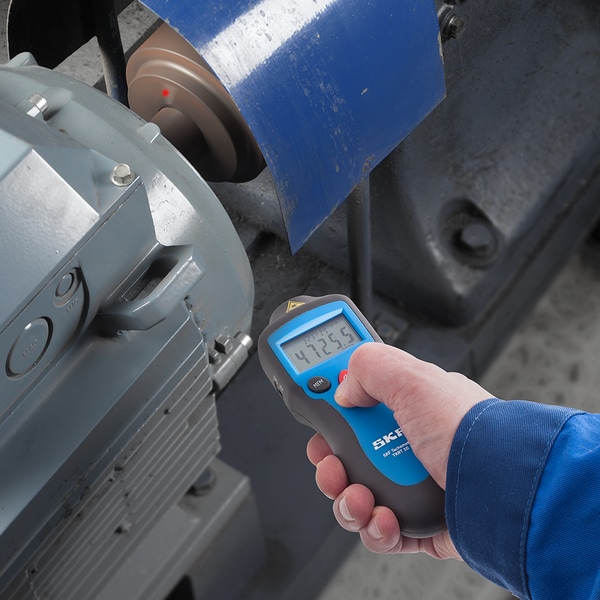The Importance of a Tachometer in Keeping Track Of Engine Speed and Efficiency in Automotive Applications
In the world of automotive engineering, the tachometer stands as a critical instrument in the motorist's collection, giving a direct window into the inner workings of a car's engine. Beyond its function as a simple gauge of transformations per minute (RPM), the tachometer serves as a vital device for fanatics and specialists alike, supplying real-time understandings right into engine efficiency and wellness.
Relevance of Checking Engine RPM
Checking engine RPM, or changes per min, is an essential facet of auto upkeep and efficiency examination. Engine RPM directly correlates with the speed at which the engine's crankshaft revolves, showing exactly how swiftly the engine is running - tachometer. By keeping an eye on RPM, auto mechanics can evaluate the health of the engine, detect potential concerns, and fine-tune efficiency. An irregular RPM reading may signify issues such as engine misfires, defective spark plugs, or issues with the fuel shipment system. Constantly high RPM readings could show hostile driving practices or the need for a greater equipment shift to boost fuel efficiency.
Furthermore, checking engine RPM is vital for efficiency examination in racing and high-performance automobiles. Maintaining ideal RPM degrees is vital for achieving peak power outcome and velocity. Racers typically use tachometers to ensure they are running within the perfect RPM array for maximum efficiency. In recap, keeping track of engine RPM is not just vital for finding issues however additionally for optimizing engine performance in numerous automotive applications.

Benefits of Real-Time Data
In vehicle applications, real-time information plays a critical role in providing instant insights into the performance and condition of the car. By continuously keeping track of different specifications such as engine speed, temperature, fuel consumption, and much more, real-time data offers numerous benefits that add to enhanced performance and safety and security on the roadway.
Additionally, real-time information helps with efficiency optimization by supplying immediate responses on driving practices and engine effectiveness. Motorists can adjust their actions in real-time based on this information to attain much better gas economic climate and lengthen the lifespan of their lorry.

Moreover, real-time data plays an essential function in modern-day automobile diagnostics, allowing technicians to swiftly detect and deal with breakdowns. This leads to minimized downtime, reduced maintenance expenses, and inevitably, improved general lorry reliability and durability (tachometer). By using the power of real-time data, automobile stakeholders can make educated choices that positively impact both the performance and long life of the lorry
Effect On Equipment Shifts
The tachometer plays a critical duty in maximizing equipment changes by supplying real-time engine speed data to the chauffeur. When approaching the redline on the tachometer, it signals the chauffeur to upshift to avoid over-revving the engine and causing potential damages.
In addition, the tachometer help in attaining smoother gear transitions, particularly in manual transmissions. By checking engine rate, motorists can carry out gear shifts at the optimum RPM array, minimizing jerking motions and minimizing endure the transmission elements. This precision on duty adjustments not only boosts driving comfort but likewise adds to sustain effectiveness.
Enhancing Fuel Performance
Provided the vital role the tachometer plays in maximizing equipment shifts for efficiency and engine health and wellness, it straight adds to making best use of fuel efficiency in vehicle applications. By offering real-time responses on engine speed, the tachometer assists motorists in maintaining the most efficient RPM array for fuel economic situation. When motorists consistently check the tachometer and adjust their motoring practices Learn More as necessary, they can avoid unneeded gas usage created by over-revving or carrying the engine.
In addition, the tachometer assists vehicle drivers identify one of the most fuel-efficient equipment to be in at any provided minute, avoiding the engine from functioning harder than needed. This is specifically important throughout acceleration and cruising, where remaining in the appropriate gear can substantially influence fuel effectiveness. In addition, the tachometer can alert motorists to possible mechanical concerns that could be negatively impacting gas economic situation, such as a slipping clutch or a blocked air filter. Finally, the tachometer acts as a valuable tool in improving gas performance by advertising optimum driving habits and identifying areas for enhancement in the automobile's efficiency.

Taking Full Advantage Of Engine Durability
The tachometer's function in keeping an eye on engine rate and performance is important in guaranteeing the longevity of automotive engines. By utilizing the tachometer effectively, drivers can optimize engine long life via conscious RPM administration. Regularly revving an engine too expensive can lead to too much wear and tear on critical parts, such as the pistons, shutoffs, and bearings. With time, this can cause lowered engine efficiency and possible malfunctions. Monitoring the tachometer permits chauffeurs to stay within the suggested RPM range for their lorry, stopping unnecessary stress on the engine and extending its life-span.

Conclusion
In verdict, the tachometer plays a vital role in checking visite site engine speed and efficiency in automobile applications. By giving real-time data on RPM, it permits effective equipment shifts, boosted fuel performance, and taken full advantage of engine long life. This tool is crucial for visit this site preserving optimum engine performance and making sure the overall performance of a vehicle.
Comments on “Comprehensive Guide to Recognizing and Making Use Of a Tachometer Effectively”